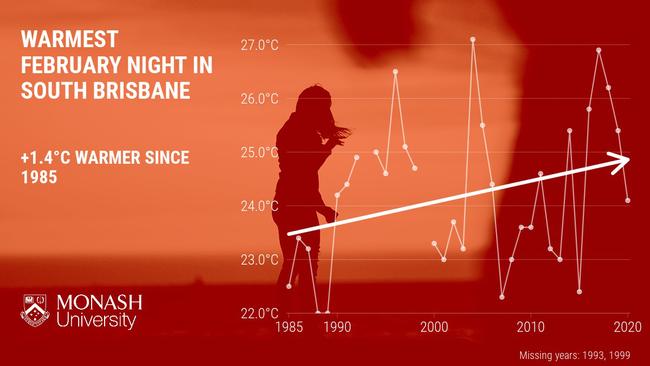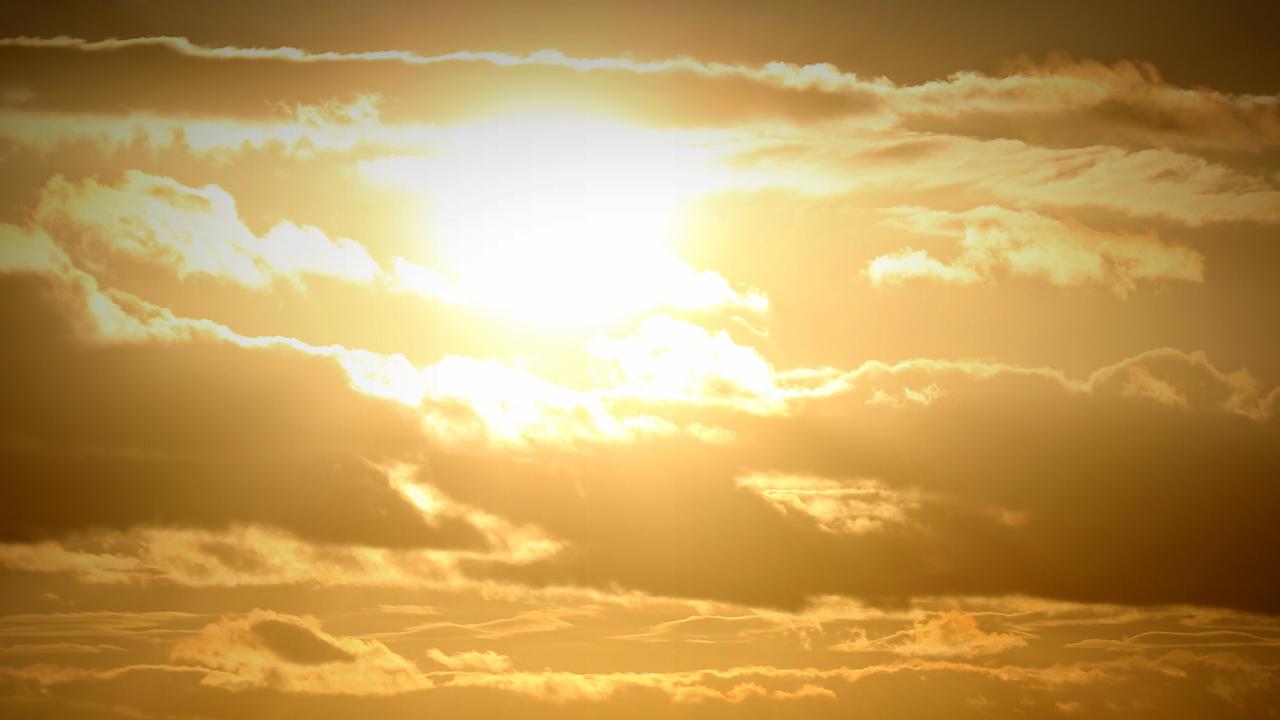Long term data shows February overnight temperatures are warmer than they were in 1985
Dr Christa Pudmenzky explains how south Brisbane's February climate is changing. Plus, what do greenhouse gases have to do with warmer temperatures?

HyperLocal
Don't miss out on the headlines from HyperLocal. Followed categories will be added to My News.
South Brisbane residents can expect a hot humid weekend with showers unlikely, hitting a top temperature of 31 degrees on both Saturday and Sunday.
With temperatures like these, cooler nights are a welcome relief from the heat.
But February nights in south Brisbane are warmer than they used to be.
February's warmest night is almost 25 degrees, more than one degree warmer than it was in the mid-1980s.
Voices from your community
The data matched the experience of Holland Park West resident Maggie, who was "very concerned" about climate change.
"Overnight minimum temperatures are increasing," she said.
"Spring temperatures have increased to equivalent summer temperatures.
"And the length of summer seems to be increasing, starting from October into April."
Maggie also noticed that local green spaces, ovals, rivers, ponds and local wildlife were affected by the warming temperatures.
Community voices like Maggie's tell us how residents and business owners in south Brisbane feel about their local climate. If you would like to contribute your voice to our column, you can fill out our 5-minute survey here.
Fast fact
South Brisbane's warming patterns are consistent with global climate change trends.
The main cause of global warming is an increase in greenhouse gases in the air - particularly carbon dioxide.
Carbon dioxide is produced when we burn fossil fuels like coal, gas and oil, mostly for energy production and transportation.
Carbon dioxide has been increasing since the industrial revolution began in the 18th century.
Dr Christa Pudmenzky is a climate scientist at the University of Southern Queensland.
This column is part of a collaboration between the Monash Climate Change Communication Research Hub and News Corp to deliver hyperlocal weather and climate information.
Follow the Hub on Twitter to join the conversation.

